By Christopher Miskimon
In the words of a veteran of the China-Burma-India Theater, retired Technical Sergeant Edward Rock Jr., [they] “served without a word of complaint or lack of courage. They transported artillery, ammunition, food, and medicine, and under enemy fire transported the wounded. Many of the CBI veterans are here today because a mule stopped a bullet or a piece of shrapnel meant for the GI. Mules fell in battle, mortally wounded, and we shed tears for them.”
Pack mules indeed performed yeoman service in Asia and other theaters during World War II, hauling weapons and equipment as well as saving lives by carrying wounded off the front lines. They took the same risks as their human masters and too often they paid the ultimate price. A report on April 4, 1944, from one of the units of Merrill’s Marauders described their sacrifice in detail: Japanese artillery fire had killed or wounded most of the unit’s mules. The stench of the dead animals was so intense that the troops would not put the wounded ones out of their misery for fear of increasing it. The remaining animals also blocked enemy fire with their very bodies, one mule having 26 holes from a Japanese machine gun.

Mules are often mentioned as having been used by Allied forces for transport in difficult terrain, but rarely are the full details of their employment laid out. The hardy pack animals were vital to the troops fighting in the jungles of Asia and the mountains of Italy, and the soldiers loved them, particularly the mule skinners, those soldiers trained to use and care for the animals. The German army also made widespread use of horses and mules for transport. The Allies, however, had access to the vast automotive production capability of the United States, so their use of pack animals was on a relatively smaller scale. This vast supply of trucks was a major advantage. The war, however, was not limited to terrain accessible by motorized transport. When it came down to it, the mule was akin to a piece of equipment, like a 21/2-ton truck, needed to take supplies into places no truck or even jeep could go.
A Mule’s Journey to the Combat Zone
Though mechanization was widespread, the past military use of animals was recent enough that there still existed men and a body of knowledge to gather and deliver the mules to where they were needed. At the start of the war, there were still a number of mule-equipped pack artillery and quartermaster units in the U.S. Army, along with the logistical facilities needed to provide animals to those units still using them. The Army Quartermaster Corps operated several remount depots at facilities such as Fort Reno, Oklahoma; Fort Robinson, Nebraska; and Front Royal, Virginia, to provide the mules, horses, and even dogs the Army required.
Mules entered military service at the remount depots and received training, initially for a period of about four months, although this was shortened during the war. Prospective mule skinners also received training at these depots. Once training was complete, the mules were ready for shipment overseas. Accompanied by groups of mule skinners, the animals were sent via train to a transshipment point at Westwego, Louisiana. There, they were loaded aboard ships dedicated to transporting animals. These ships, called “floating barns,” carried the mules, handlers, and a three-month supply of fodder and water for the voyage to the combat zone.
One such ship was the converted Dutch freighter Tjinegara. It could carry 460 mules per voyage. The animals would be led up a loading ramp and taken to stalls below decks in the ship’s holds. Stalls were seven feet long and two and a half feet wide, complete with water bucket and straw spread on the deck. Movable stalls were secured on the ship’s top deck. These were placed on the dock by crane and the mules loaded directly into them; then the entire stall was lifted onto the ship. Normally, about 5percent of the available stalls were set aside to isolate sick animals from healthy ones. All care of the mules was provided by the accompanying mule skinners.
At sea, the mules were subject to the same problems humans faced. They needed to get their “sea legs” just as a person learned to deal with the motion of a ship upon the open sea. Seasickness was also a common problem although the animals usually recovered with no trouble. The skinners would regularly move the animals to give them some exercise and relief from the ship’s motion. In rough seas the hapless beasts would be tossed around in their stalls, suffering concussions, broken bones, and bruises. Veterinarians aboard ship treated the mules as best they could; those that died from sickness or injury were buried at sea.
Upon arrival at their destination, the mules would be offloaded. The animals often became uneasy about being led down the ramp, particularly if the ship was moving. A bell mare, a lead animal with a bell around its neck to make the other animals in a string follow it, would be used to guide them down the ramp. Unfortunately, some offloading sites were undeveloped, with no docks. In these cases, the ship would get as close to shore as possible before using winches to lower the mules to just above the waterline before dropping them into the water. From there the mules could simply swim the short distance to the beach, instinctively heading toward it. The mule skinners would then return to the United States for another voyage.
Tjinegara made a number of such voyages to Calcutta, India, to deliver its cargo of pack mules for the China-Burma-India Theater. On July 25, 1942, she was taking a load of horses to New Caledonia when the Japanese submarine I-169 torpedoed and sank her. Other ships nearby rescued the crew, but her entire cargo of animals was lost. One other animal transport vessel, the Jose Navarro, was lost in the Indian Ocean on December 7, 1943. Five hundred mules went to the bottom with her.
Pack Troops and Artillery
After delivery to the combat zones, the mules were loaded onto trains and sent to units at the front. Once there, two primary users took advantage of them. The first was the Quartermaster Corps, organized into pack troops that used the mules to carry all manner of supplies to support frontline forces. The nature of fighting in places such as Burma often lacked definitive lines, meaning support units were often under fire themselves.
The second main employer of the mules was the pack artillery battalion. The M-1 series 75mm pack howitzer, developed during the late 1920s, was designed to be broken down into six loads, each light enough to be carried by one mule. Pack artillery units saw service on virtually all fronts during the war, but they are best known for their service in Italy, the Pacific, and the CBI. Last, mules were issued to individual formations that were serving in terrain where the mule was vital for transporting supplies.
The first American pack artillery units to see combat in World War II were those in the Philippines; they came under attack by the Japanese in the opening days of the conflict. The doomed U.S. and Philippine troops were soon forced to eat their hapless animals, and they finished the campaign fighting as infantry. The 97th Field Artillery Battalion (Pack) also saw early service, sent to New Caledonia in March 1942. Unfortunately, the unit was told that its mules would be furnished at its destination. When they arrived, there were no mules to be found. Eventually 350 animals arrived, carried by the Tjinegara. Almost a third of them were practically untrained, leaving the unit to break the mules in themselves. The 97th later went to Guadalcanal with their mules.
The Mules of Merrill’s Marauders
The mules really proved their value in the CBI with both British and American units fighting there. The famous British Brigadier Orde Wingate used large numbers of mules to supply his Chindit Brigade. Wingate’s operations involved deep forays into enemy-held territory through terrain devoid of road networks. The mules proved ideal for carrying supplies in this environment. Often, these mules had their vocal cords cut to prevent them from braying and exposing British positions. During the second Chindit expedition in the spring of 1944, about 1,400 mules were delivered by gliders in order to carry supplies brought in by air.
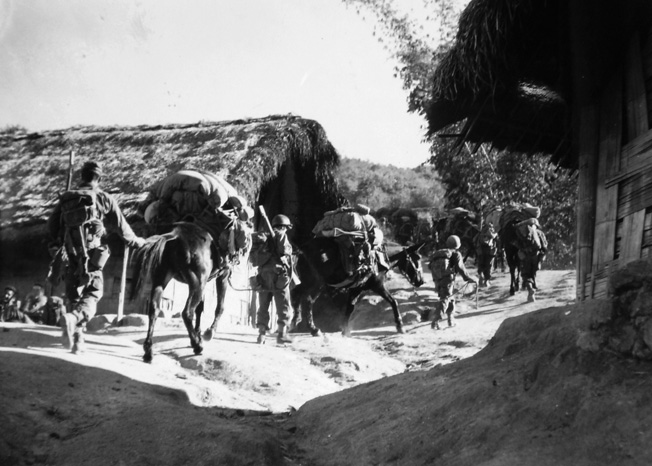
The most famous American unit of the CBI was the 5307th Composite Unit, also known as “Merrill’s Marauders.” Undertaking operations similar to those of the Chindits, it used large numbers of mules. Six Quartermaster pack troops were part of the unit, and mules were liberally issued to the rest of the unit as well to transport their own equipment and supplies. Each troop had about 300 mules and 75 men. Since conditions required that a soldier lead each mule, the pack troops kept about 70 mules and spread the rest to the rifle battalions. Each rifle company got 42 mules, 10 for the headquarters and weapons platoons, the rest to the rifle platoons. The battalion headquarters company used its mules to transport the heavy weapons, radios, and other gear it needed. Ten mules were set aside for the evacuation of casualties.
It took four mules to carry a heavy machine gun or mortar, one for the weapon itself, and the other three for ammunition. Efforts were made to take only necessary equipment to lighten the mules’ loads as much as possible, and each mule generally carried spare horseshoes and a day’s supply of grain. The animals also ate bamboo or banana leaves.
During campaigns the mules proved their worth time and again. Don L. Thrapp served with the Marauders and later wrote of his experiences with the pack mules during the fighting at Tonkwa against the Japanese. “They were zeroed in on our bivouac area at a river crossing, and their fire caused us some casualties in men and animals. One tree burst accounted for seven animals. Another shell cut between two mules … and burst about eight feet behind them, but injured neither.”
The Japanese soon fell back, and Thrapp’s unit moved near the abandoned positions. From there, the mules were used to pack supplies up to the forward areas, but efforts were made to keep them out of enemy artillery range since there was no way to replace lost animals. Chinese troops captured some pack animals from the Japanese and eagerly traded them to the Americans for various goods they could sell back home.
When the fighting in Burma ended, the mules and horses that had served there were ordered disposed of. Some were sick after their service in the fetid jungles of Southeast Asia and had to be destroyed. A farewell volley was fired for them. Others were sent to remount stations and shipped to Eastern Europe and the Balkans as part of the Lend-Lease Program. Others were sent to farms in the Philippines or China. More still went to the Chinese Army. Several years later, during the Korean War, a Chinese mule captured by American troops north of Seoul in May 1951 had its old U.S. Army brand still apparent.
Mules in Italy
The mountainous terrain of Italy also required the mule’s services. For example, an infantry regiment needed 250 animals per day to keep it supplied. Many of the mules were obtained locally and were usually smaller than American-bred animals. Often this required modification to the pack equipment in order to fit the local animals or, instead, the equipment would be acquired locally. Remount depots were established on the Italian mainland and took these animals into service. Prices originally started at $80 for a mule but later rose to $250 on account of the high demand. Occasionally the need was so great that a mule might be bought even though it was only good for a single trip to the front with supplies.
One soldier of the U.S. 45th Infantry Division recalled driving up and down Italian roads commandeering every mule his detail came across. The Italian owner would be given a voucher he could redeem with the U.S. Army for later payment and the mule would be loaded aboard a truck and carried off whether the owner liked it or not. The soldiers later lived alongside these mules as they carried supplies to the troops at the front.
Normal army policy forbade the purchase of light-colored animals because enemy observers might spot them too easily. The extreme need, however, forced their commitment into service with disastrous results. German troops happily observed the too visible animals’ movements and used them as references for artillery and mortar fire. To solve the problem, the Remount Service used a solution of potassium permanganate sprayed on the mules to dull their coats. The treatment remained effective for up to two months.
Remount Service troops also went forward and gathered captured enemy animals, putting them into Allied service if they were still healthy enough. German forces tended to use more horses than mules, but small numbers were recovered. The animals were concentrated at an Italian cavalry school at San Martino De Spino. Here, American troops became angry over the number of animals brought in with burns to either their hindquarters or their faces and necks. It was apparent to the soldiers that the Germans, in their haste to retreat and unwilling to leave their wagons to the advancing Allies, had simply set them on fire. The animals pulling the wagons or being led along behind them had not been freed first. U.S. troops quickly ended the poor creatures’ suffering.
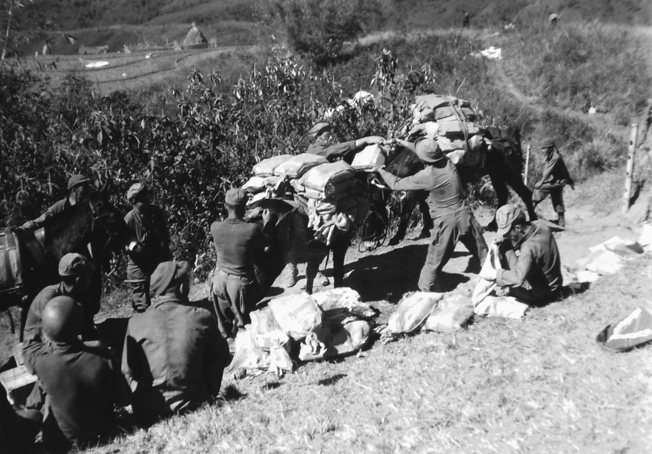
The Allies also made use of nine pack mule companies of the Italian Army after the Italian surrender. Goumiers, French colonial troops from Morocco that served in Italy, used mules extensively, and many photographs of these African warriors show pack-laden mules in the background. It was in Italy that the mules received perhaps their greatest compliment when Bill Mauldin featured them affectionately in several of his Willie and Joe cartoons. With the end of the war in Italy, the mules on hand were distributed to those Italians who had fought with or otherwise helped the Allies and to local farmers in general.
A Niche Role
Mules filled an important niche in the Allied logistics network, particularly in areas where poor road systems limited wheeled transport. Many soldiers came to have great affection for them. Certainly they were relied upon heavily. After the war, mechanization eclipsed the mules and their accomplishments. Only a very few pack units were retained after the war. Despite some use in Korea, the last pack mule-equipped units in the U.S. Army were deactivated on December 15, 1956.
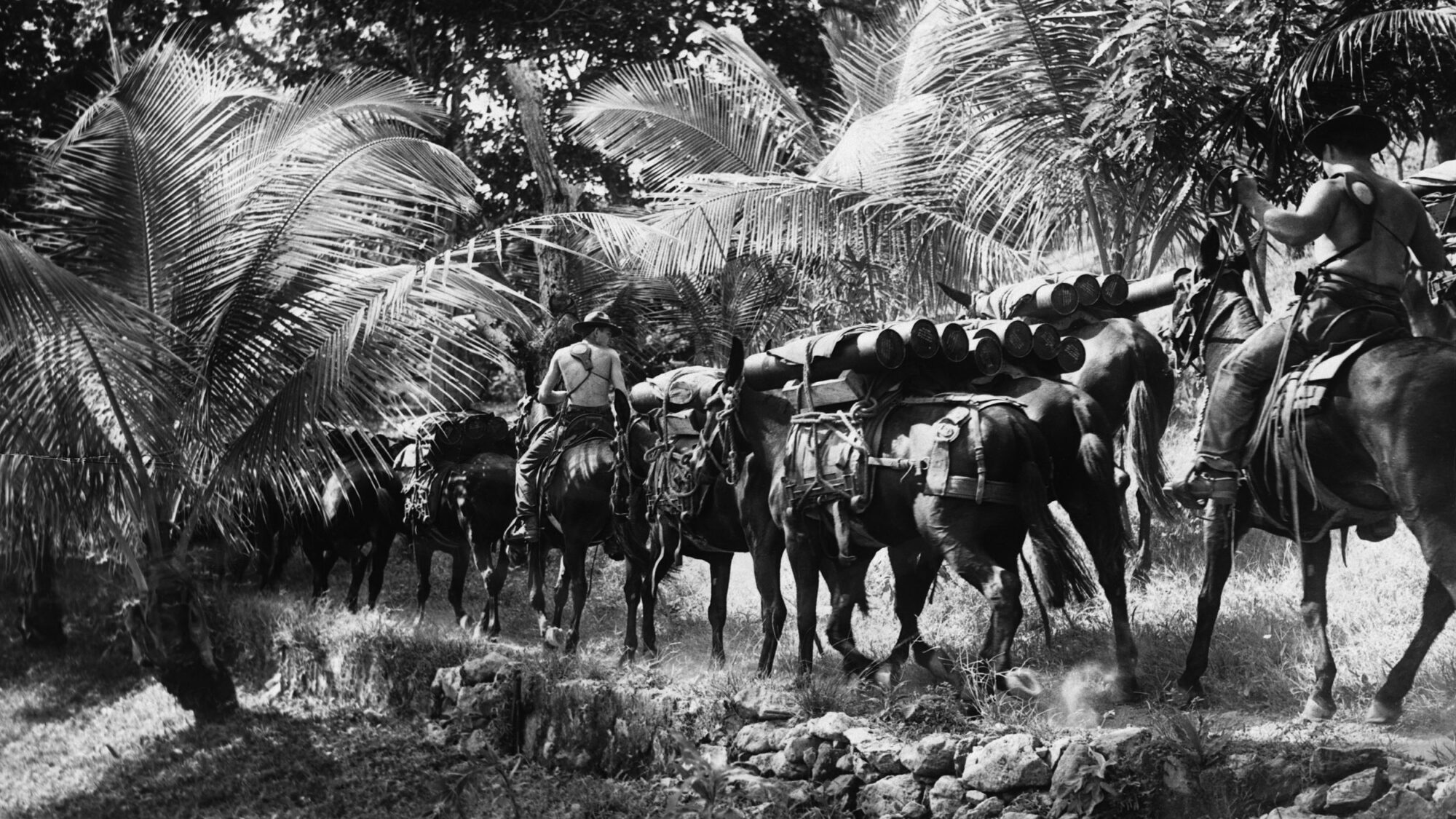
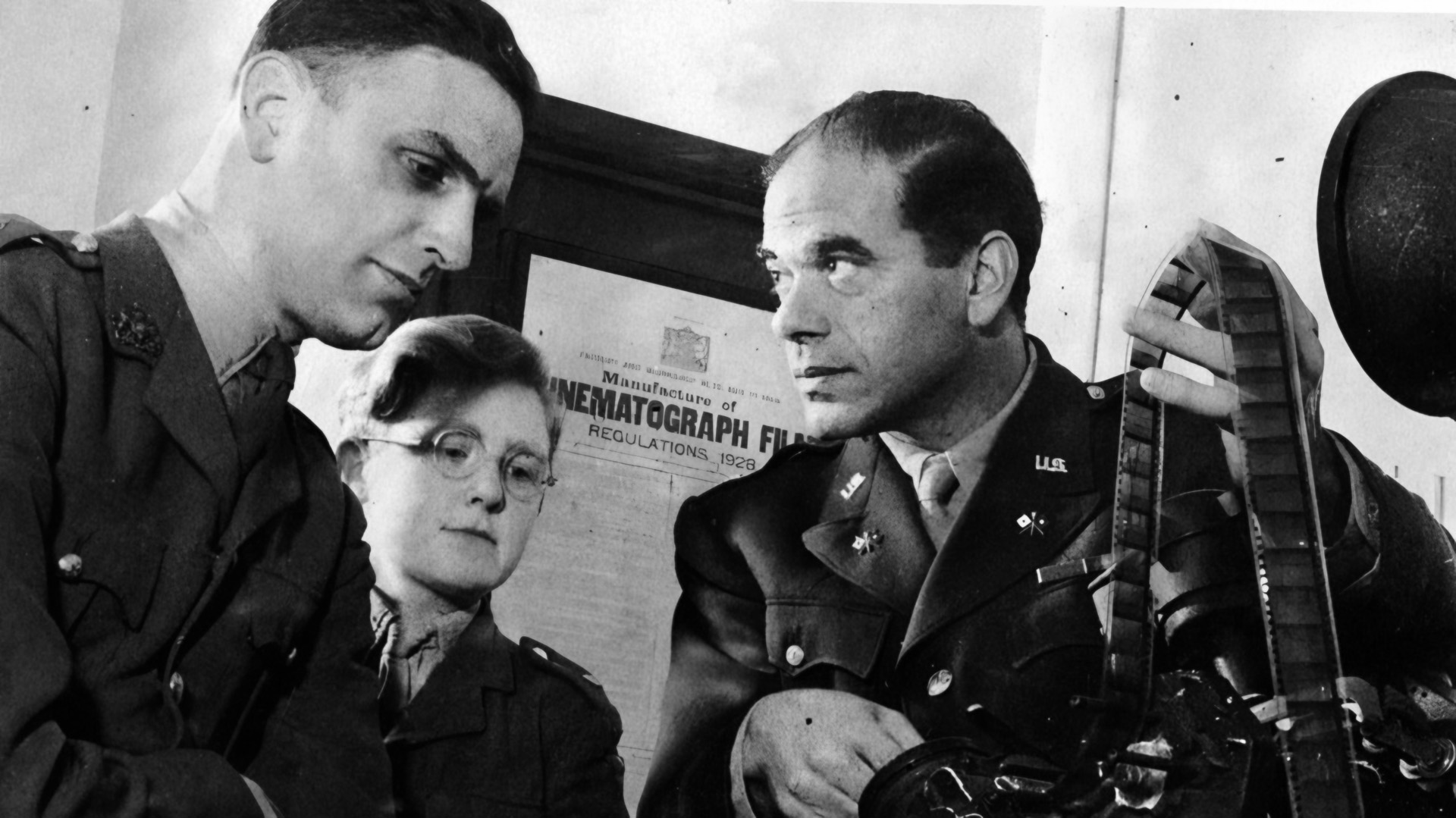
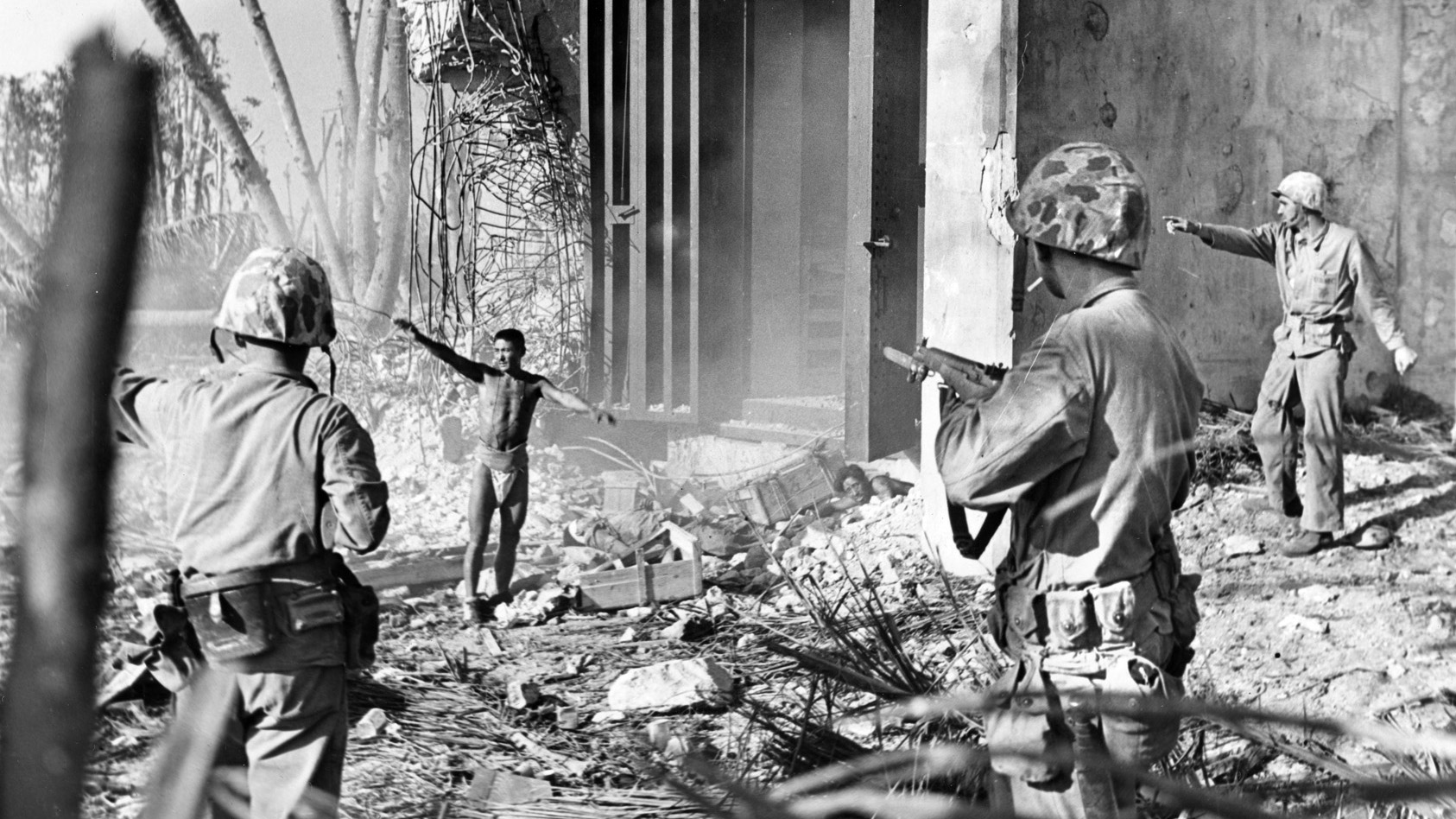
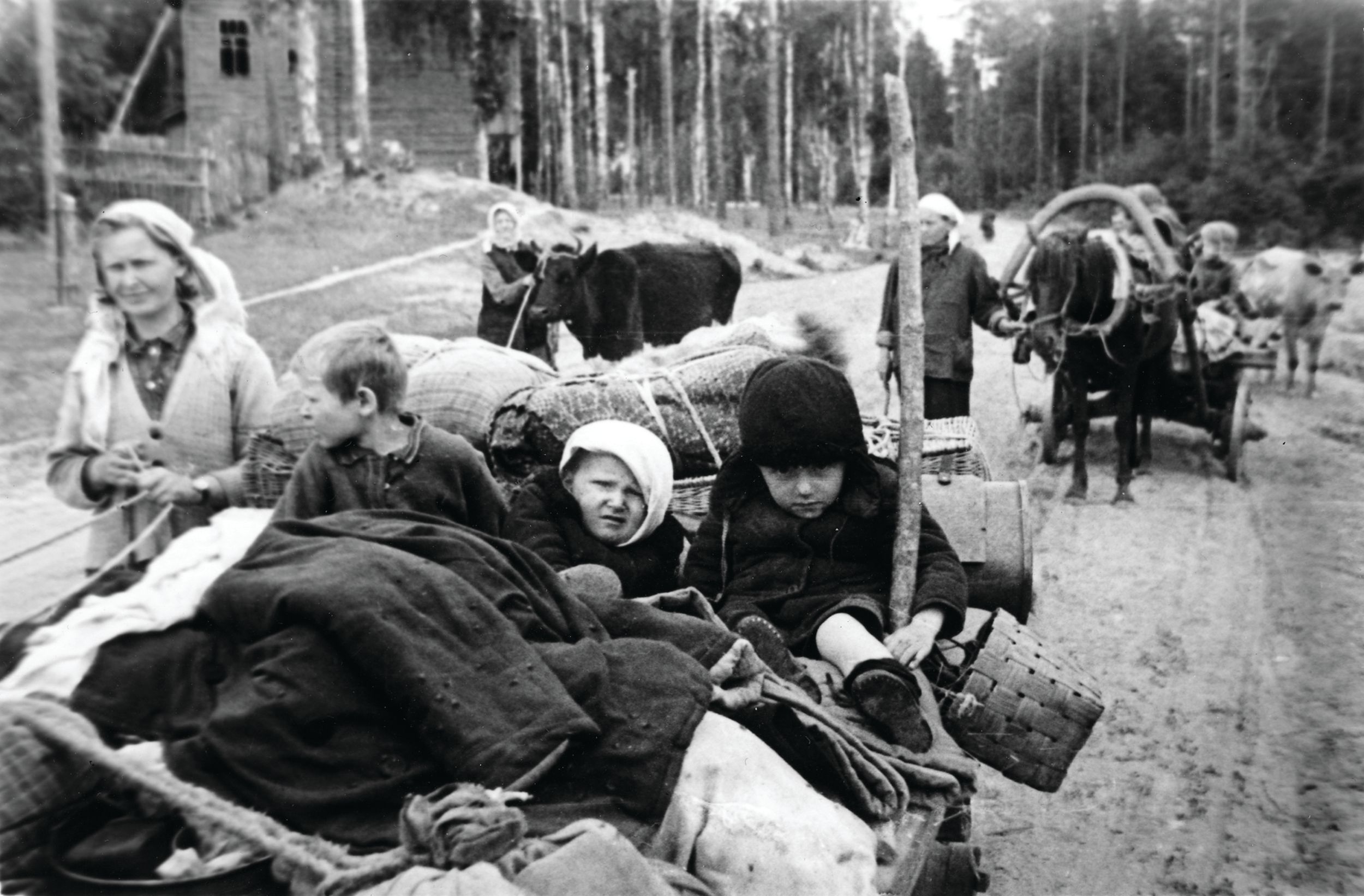
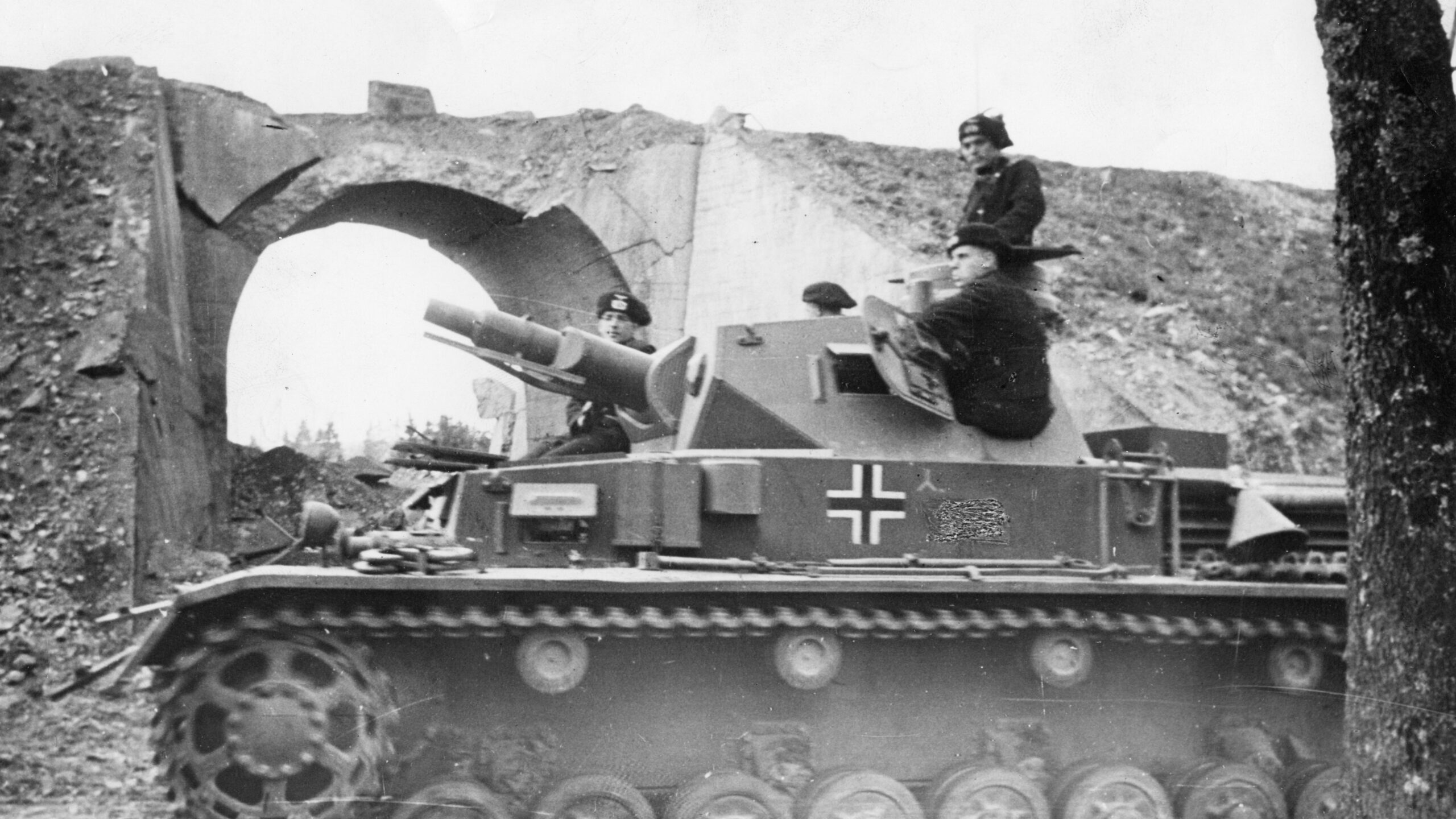
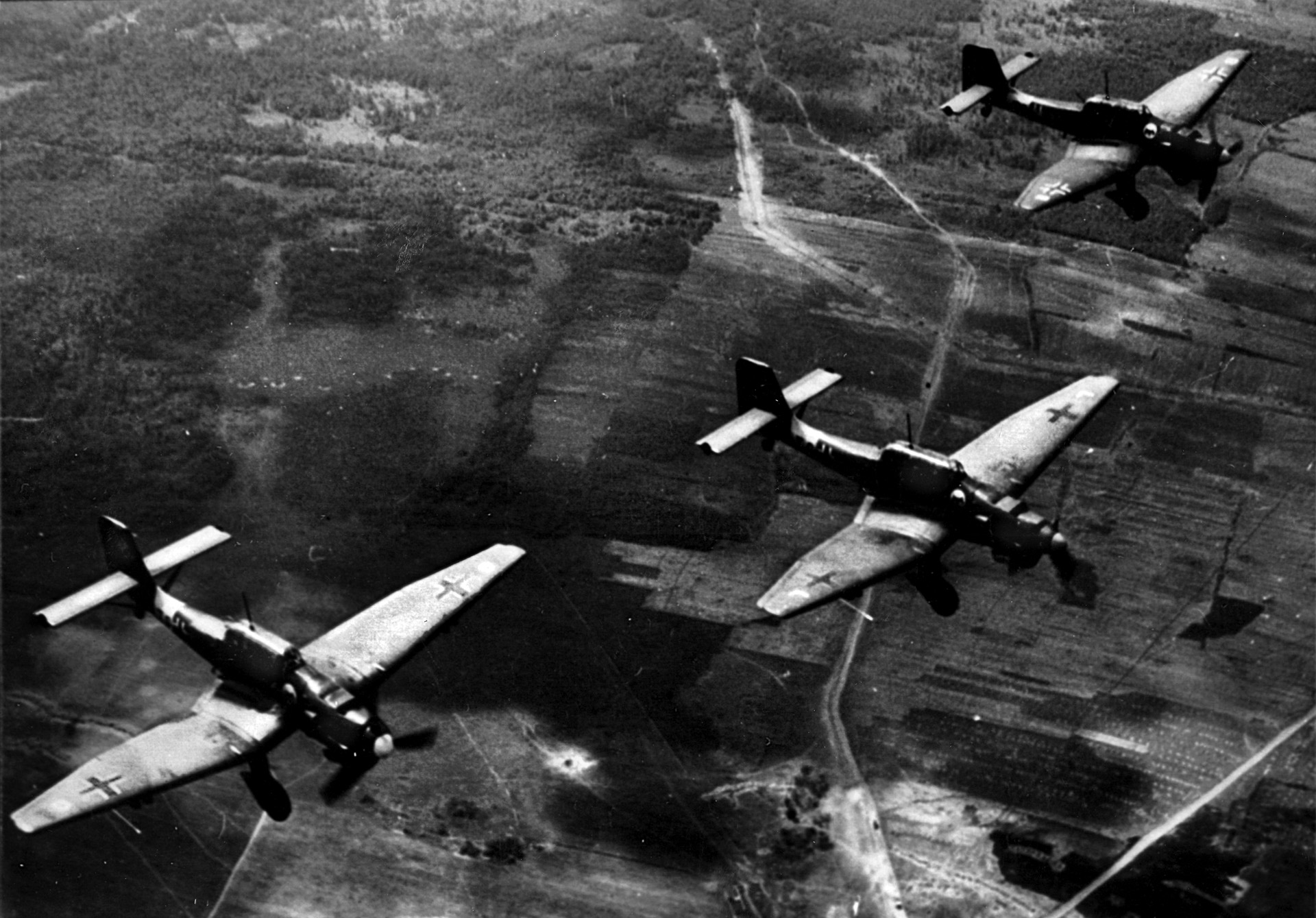
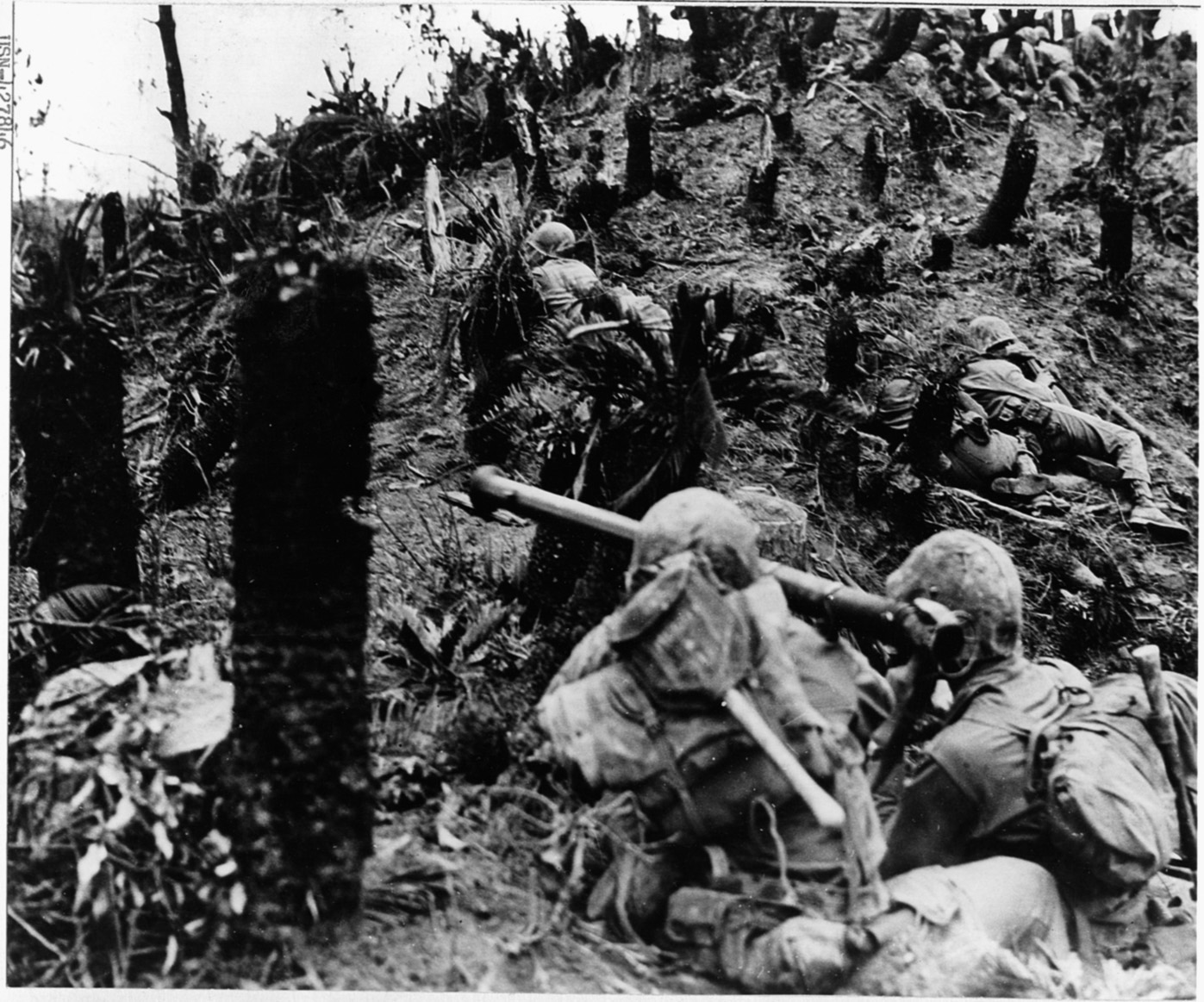
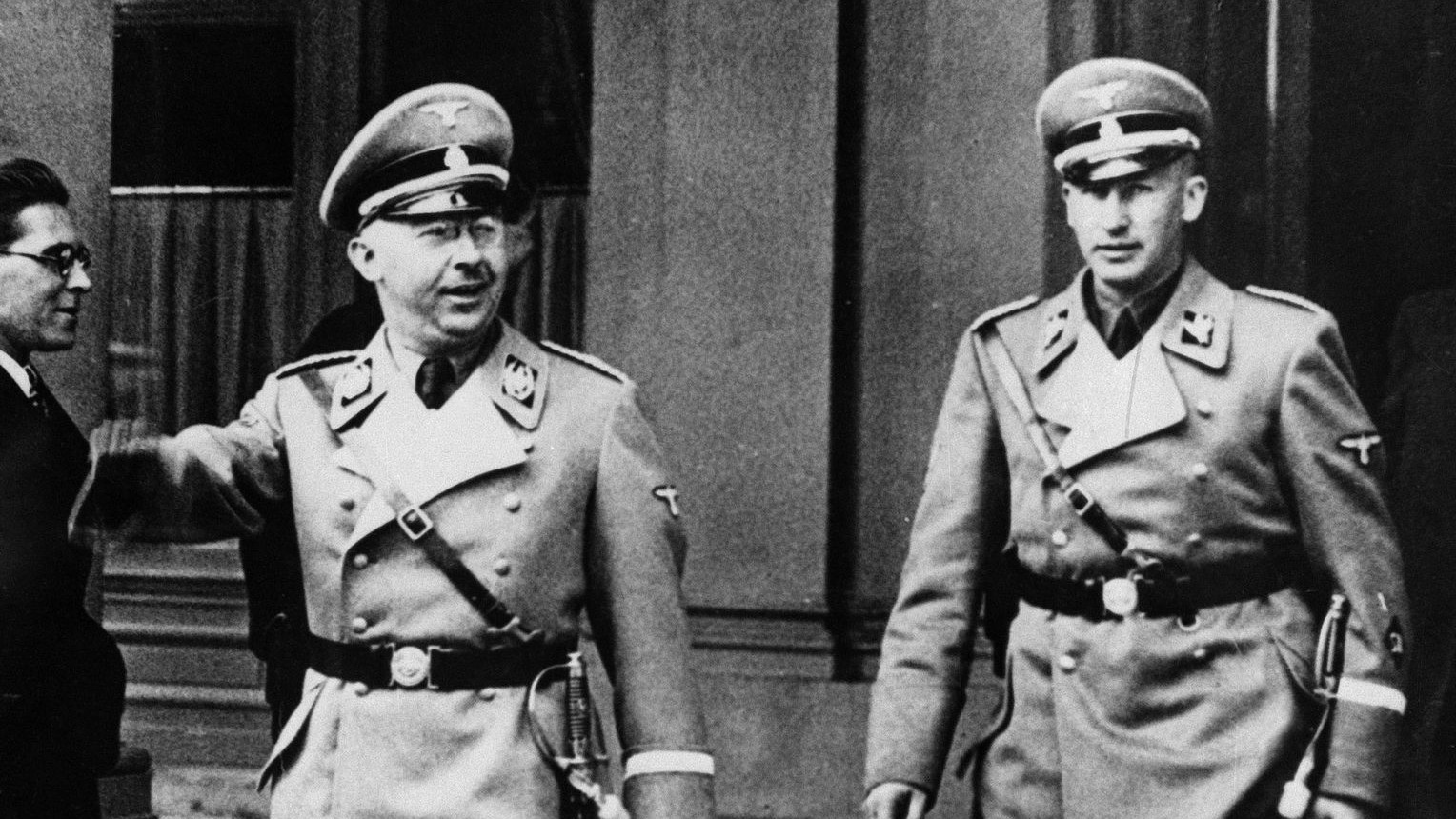
Army Major and veterinarian B. E. Foote served in Italy and
North Africa from 1943-1945. He was from Memphis TN and
was my father. I would welcome anything you know of his service
there. I know he cared for mules and some horses.
Hi Kay,
The “bell mule” you refer to, may refer to a mule which was more trained than the others and had its tail hair cut into a bell, rather than wearing a bell around its neck. The bells were cut into the hair on the tail to show that they had certain training. Before that, their tails were shaved. Mule skinners would look for a better trained animal to lead down the gangway first. Check out this article: http://www.richardrandall.com/doku.php?id=articles:mule_tails
Best wishes, Rob